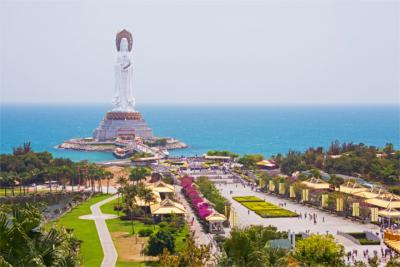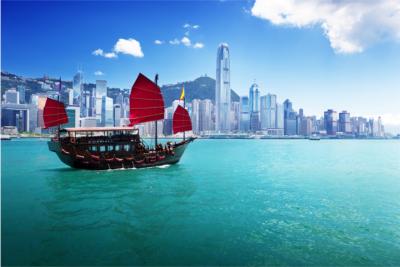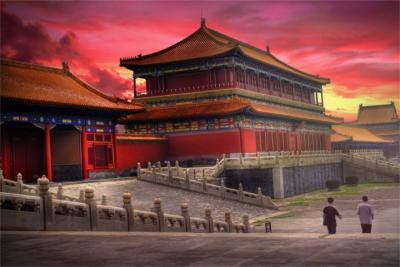Travel Offers
Travelmyne Featureprint
Distance
Tibet - The Roof of the World
Magnificent monasteries, monks with yellow hats and a breathtaking mountain world fascinate visitors of Tibet. Spirituality is closely connected to the population's life on the "Roof of the World". In addition, the extraordinary, untouched - and often sacred - nature make Tibet a special travel destination.

Geography - The highest situated region on earth
The Tibet Autonomous Region under Chinese administration comprises the greatest part of the historical Kingdom of Tibet. It is located in the Tibetan Plateau, the highest situated region on earth. This gigantic plateau is enclosed by several mountain ranges. The mighty peaks of the Himalayas in the south and west are particularly prominent. The climate is very dry and there are extreme temperature variations between day and night.
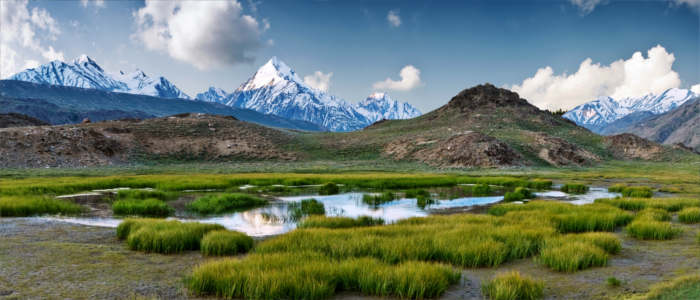
Nature - The realm of the yaks
Endlessly vast steppes and desert-like landscapes extend in the Tibetan Plateau. Patches of grass, partly vegetated by shrubs or trees, alternate with stony plains. In this inhospitable area you find the famous snow lotus – the only flowering plant which grows in such high regions. In addition, a number of medicinal herbs grow here. Mighty mountains with harsh rocks rise up at the edge of the plateau. The lower areas are covered in meadows as well as broadleaf and conifer forests. This is the habitat of the yaks (Tibetan antelopes), wild donkeys, bears and deer. In the higher region, on the other hand, you find a world of everlasting ice and snow. Numerous large blue salt lakes stand out in the middle of this wild nature.

Natural sights - Magnificent mountains
Mount Kailash (6,714 m) has a pyramid-shaped, distinctly symmetrical peak and is the most sacred mountain of the Buddhism and Hinduism. You can admire its beauty and dignity on a pilgrimage route, which is 53 kilometres long and leads around the mountain up to a height of 5,700 metres. Due to its religious significance, the mountain has not been climbed yet. The u-shaped valley of the Yarlung Zangbo Grand Canyon is a green oasis, in which plants and animals flourish in the midst of a harsh mountain world. A real highlight are the many hot springs in the Yambajan region north-west of the capital Lhasa. Visitors can relax amid forests and meadows here. Impressive destinations among the numerous scenic mountain lakes are the sacred, turquoise Yamdrok Lake and the likewise sacred, blue Namtso. Furthermore, the Yading Nature Reserve is considered the "last patch of pure nature" on earth. A worthwhile activity is a ride with the Qinghai–Tibet railway between the Chinese city Xining and Lhasa. The train's panorama windows offer a great view of Tibet's fantastic, wild mountains on the world's highest situated railway line.

Culture - The Kingdom of Tibet
The historical Kingdom of Tibet was in its prime from the 7th to the 10th century. Later on, it was conquered by the Mongols and it has been under Chinese rule since the 18th century. Despite these influences, Tibet's inhabitants lived as a rural nation until the 20th century, in which the monasteries – headed by the Dalai Lama – controlled the country's fate. In 1913, Tibet became an independent state. However, after the takeover of the Communist Party in China under Mao Zedong, the Chinese occupied the territory again in 1950. This resulted in the 1959 Tibetan Uprising, which was quelled with bloodshed and made the Dalai Lama escape to India. The life of Tibet's people is still closely related to the Buddhism – every farmhouse is decorated with a prayer flag and religious symbols. Their spirituality helps the inhabitants to have a smile on their faces despite the difficult political and economic situation. Besides the sedentary population, there are tribes especially in the north of Tibet which have been roaming the region as nomads for centuries. The yak plays a major role in the pastoral culture as a working and pack animal.

Cultural sights - The sacred Potala Palace
The capital Lhasa is surrounded by mountains and fascinates all visitors. It is the region's spiritual centre. On the "Red Hill" (Marpo Ri) in Lhasa you find the Potala Palace, which has been the shooting location for several films. The former residence of the Dalai Lama consists of magnificent clay and wood buildings, which lean against the mountain and give visitors an understanding of Tibet's deeply religious spirit. The Jokhang Temple in Lhasa with its gold-plated roof is considered the most important religious sanctuary. A true experience is walking around this temple along the Barkhor Street together with the pilgrims. A popular destination is Norbulingka Palace with its great park which invites travellers to take a walk. Near Lhasa you find the beautiful Drepung Monastery, one of the greatest complexes of its kind. The Ganden Monastery and the Tashilhunpo Monastery are impressive examples of Tibet's many unique religious buildings. You best experience the region's nativeness in the town Gyantse.

Experience - The world of the Tibetans
A cuisine which does with only a few ingredients has developed in the barren landscape. Salted butter tea is ever-present in Tibet. It is also used to blend the national dish tsampa, which is made of barley flour. Dumplings such as the momos and yak meat are also part of the Tibetan cuisine. Shopping streets such as the famous Barkhor Street and markets invite travellers to browse foreign products and get a souvenir for taking home. Holidaymakers like to buy prayer flags, Buddha figurines, carpets, masks or jewellery. Other wonderful ways of getting to know the nature of the unique Tibetan culture is listening to the traditional songs of the monks or visiting the operetta-like theatre with its masked actors and the mostly Buddhist content. In addition, splendid religious festivals take place throughout the year.

Activities - Adventure and ease of mind
The fascinating world of the high mountains invites visitors to explore Tibet's unspoiled landscape. There is a number of hiking trails – from easy to more demanding routes. Travellers who want to climb the gigantic peaks can do this on guided mountaineering tours, for example, which are offered by many operators. Mountain biking, trekking tours on a horse and rafting are popular as well. An impressive experience is taking part in the life in a monastery – be it by attending a ritual or by making a meditative stay to find one's self.
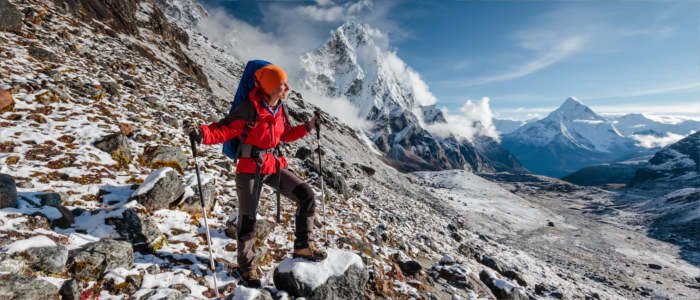
Information
You can fly to Tibet via China or Nepal. From there you can arrive at the airports in Lhasa (LXA) and Daocheng Yading (DCY). Within Tibet you reach particular towns on roads or by taking the Qinghai–Tibet railway. The latter connects the region to China. The inhabitants mainly speak Tibetan.
Tibet is a worthwhile travel destination for people who want to get to know the Buddhist way of living with its magnificent monasteries. The region also offers perfect conditions for adventurers who are eager to explore one of the most extreme and natural landscapes on earth with unique, gigantic mountains.


